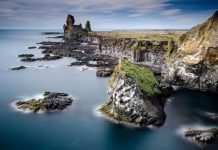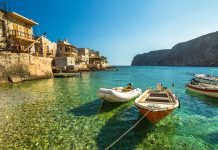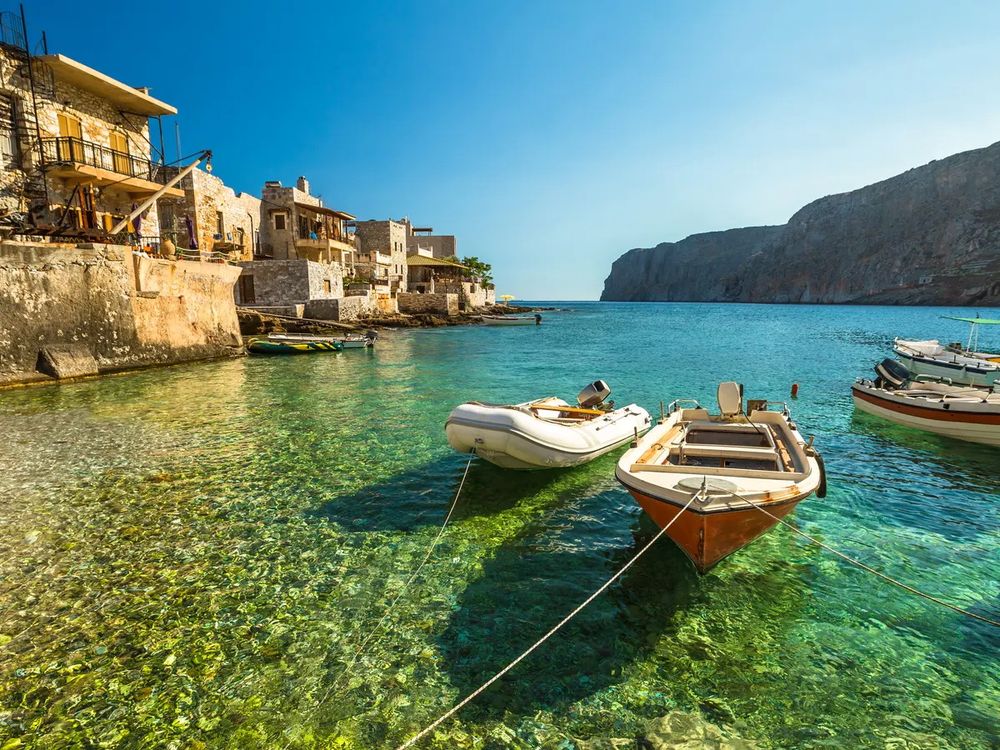Surrounded by impressive lunar landscapes of valleys, honey-colored villages are cut inside the mountains, sometimes they have changed for a long time, almost forgetting about the old rural roots, but their charm has not become less. New cave boutique hotels have appeared in narrow alleys, the number of which is growing all the time, but to get there, tourists have to drive random cars and even tractors along winding roads. In the villages, elderly women still sit at the doors of their houses, engaged in knitting.
The Goreme Open-air Museum is also located here – a testament to Byzantine history. And when you walk through the golden valleys, it seems to you that you have been transported into a book of fairy tales. Half-forgotten and little-visited churches in the rocks are found here literally at every step. With relatively easy accessibility and striking landscapes, it is not surprising that Goreme turns the heads of tourists.
Attractions
One of the attractions of Turkey included in the UNESCO World Heritage List, the Goreme Museum-Reserve, an indispensable place to stop on any route in Cappadocia – it deserves a two-hour inspection. One kilometer up the hill from Goreme there is a cluster of churches, chapels and monasteries cut into the rock. At first it was a Byzantine monastic settlement, where only 20 monks lived, then, from the XVII century, a place of pilgrimage.
WALKING IN THE VALLEYS AROUND GOREME
Around the village of Goreme lies the magnificent Goreme National Park. Several valleys can be easily traversed on foot; each one will take you from one to three hours. Most of the valleys connect to each other, so you can combine several in a one-day outing, especially if you use the help of numerous dolmush. Don’t forget to bring a bottle of water and sunscreen.
Caution: Although many of the valleys are now equipped with trail signs and a system of information stands at strategic points on the paths to the Gulludere and Kyzylchukur valleys, many of the trails remain almost unmarked, and there are still no detailed maps of the area. It’s easy to get lost here if you get off the main paths.
From the ticket office, follow the cobblestone road until you reach the Chapel of St. St. Basil, dedicated to St. Basil, who was born in Kayseri. St. Basil the Great, one of the most revered saints in Cappadocia. The recesses in the floor covered with bars were the graves of architects and patrons of the chapel, in smaller niches there were the remains of less famous citizens. On the left in the main hall there is an image of St. Basil, on the right – the Maltese cross, as well as St. Theodore Stratilat and St. George, striking a dragon symbolizing idolatry. In the right part of the apse, the Mother of God holds the baby Jesus in her arms, on whose halo a cross is visible.
Having risen above the chapel of St. Vasily, bend down to enter the Apple Church towering over poplar Alley. built in the XII century . The relatively well-preserved building has both simple red ochre plaster and professionally executed frescoes on biblical subjects. The Ascension of the Lord is depicted above the door. It is believed that the church owes its name to an apple tree growing nearby, or to a misinterpreted ball held in the hand of the Archangel Gabriel in the third vaulted hall.
Byzantine soldiers carved the chapel of St. The Barbarians, dedicated to their patron saint, depicted to the left of the entrance. They also painted mysterious scenes on the roof – the one in the middle may represent the Ascension of the Lord; above, on the far wall, St. George is depicted, and a strange creature must be a dragon, which, of course, is being killed. The decoration is typical for the period of iconoclasm, when images were outlawed – stone walls were painted with red ochre, and no images of people and animals.
Up the hill, in the Yilanlianli Church, the dragon is having a bad time again. When the church was given a name, it was mistaken for a snake, which added to the suffering of an already mortally wounded monster. On the right is the image of hermit Herma-Frodita St. Onuphrius, covering his groin with a palm leaf. Right in front, in the form of a small figure next to Jesus, one of those at whose expense the temple was built.
The most famous of the museum’s temples, the stunning, frescoed Karanlak Church, is certainly worth a separate ticket. The additional fee is due to the fact that an expensive restoration has been carried out here; in addition, they are trying to reduce the number of visitors in this way for the sake of preserving the frescoes. The name of one of the most beautiful churches preserved in Turkey is due to the fact that initially there were very few windows in it.
Just behind the Kazanlykyk Church there is a small chapel of St. Catherine, which contains frescoes with images of St. George, St. Catherine and deisus.
Charykly Church, built in the XIII century, is so named because of the footprints on the floor, personifying the last footprint left by Jesus before the Ascension. Four evangelists are depicted under the central arch; on the left, above the door arch, there is a scene of Judas’ betrayal.
Further down the slope is the fenced-in Rahibeler Convent. which was originally multi-storey; all that remains of it is a large unpretentious refectory and, a little higher, a small chapel with unremarkable frescoes.
Churches of the Gulludere Valley
The trails around the Gulludüdere lre Valley are easily accessible to hikers of various levels, along the way you can see beautiful landscapes with the characteristic mountains of Cappadocia. In addition, these mountains hide legendary, little-visited churches carved into the rocks, with remnants of paintings and bizarre stone carvings.
Follow the signs – the trail to D in the Gulludere Valley leads to Kolonlukilis. Its rocky facade is easy to miss. Follow the path through the garden, then take the steps to the left into the chamber, from which you need to climb to the unremarkable rocky facade. When you get to the entrance, in the lower chamber you will see a white-stone nave with massive columns carved in stone. From here, go back through the garden and follow the main path to Khachly kilisa, where you can take a break in the shade, sitting in a cafe inside the cave. To the church itself, you can walk along a flimsy wooden ladder; The frescoes in the apse date back to the IX century, and a large cross is carved on the vault. From there, head north and choose the right path to Uch Khachli kilise, there is a striking relief on the vault and damaged frescoes representing Christ on the throne.
El Nazar kilise
Carved into a whole conical rock, the church of the 10th century, El Nazar Kilis, has been restored, although the frescoes are not in the best condition. To find her, follow the signposted trail near Muse Caddesi.
Sakly kilise
A yellow sign leads from Muze Caddesi to the church of Sakla kilise. After reaching the top of the hill, follow the trail to the left and look for steps leading down the slope on the right.










